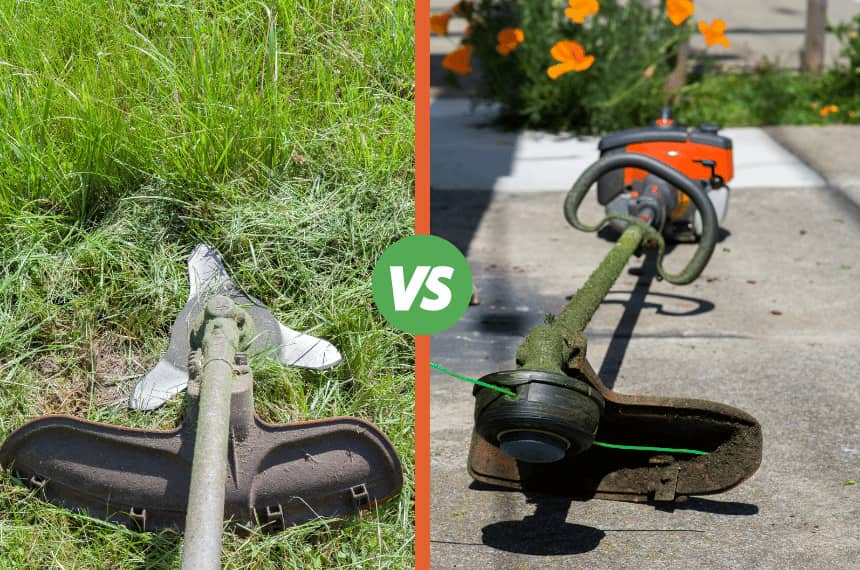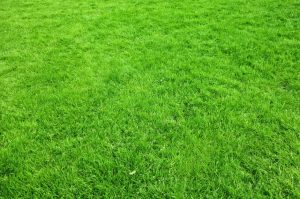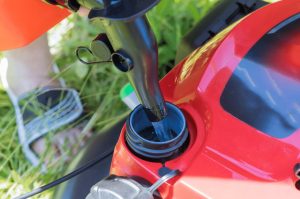Gardening can be a physically demanding activity, but it can be a lot simpler with the correct tools. We will compare line trimmers with whipper snippers in this article to help you choose the finest tool for your gardening needs.
What is the difference between a line trimmer and whipper snipper?
While line trimmers, often referred to as weed eaters, and whipper snippers are considered the same thing in Australia, they actually do slightly differ in several aspects:
- Power source
- Cutting mechanisms
- Size and weight
- Cost
In a short overview, we prefer whipper snippers for more dense bush and larger areas. Whereas line trimmers tend to be for smaller garden spacers. Below, we’ll walk you through each of these aspects and provide detailed explanations so you can decide which option is best for you.
1. Power source
Line trimmers can be powered by electricity or gasoline, but whipper snippers are usually powered by gasoline.
Electric line trimmers are ideal for small gardens since they are quiet, easy to use, and require little maintenance. However, their limited range and reliance on a nearby power source may need to be revised for larger gardens.
On the other hand, gasoline-powered whipper snippers are more powerful and portable, making them perfect for larger gardens. They are, however, noisier, pollute the environment more, and require more maintenance than electric vehicles.
2. Cutting mechanisms
Line trimmers use a string that rotates at high speed to cut through grass and weeds. The string degrades over time and must be renewed regularly.
On the other hand, whipper snippers employ a blade that rotates quickly to cut through thick vegetation. In short, whipper snipper blades are more resilient than strings and can be replaced less frequently. However, they may not be as effective for small and narrow garden spaces.
3. Size and weight
In our experience, we find that whipper snippers are generally larger and heavier than line trimmers, making them more suited for larger gardens. They also have longer shafts, allowing users to reach more without bending over.
Line trimmers, conversely, are more compact and lighter, making them perfect for narrow places and tiny gardens. They are also easy to use, making them an excellent choice for people with little experience or strength.
However, they may not be suitable for larger gardens because they have a smaller cutting width and require more passes to cover the same area.
4. Cost
Another consideration when deciding between a line trimmer and a whipper snipper is price. Because of their bigger size and more powerful motors, whipper snippers are generally more expensive than line trimmers.
However, there are numerous low-cost options for both tools, so users should select the one that best meets their needs and budget.
Which Tool is Best for Specific Landscaping Tasks?

Lawn edging
Line trimmers are perfect for lawn edging because we can cut along the edges of a lawn fast and correctly, creating a nice and tidy appearance. You can also use whipper snippers for grass edging, but you need to remember that they are less exact due to the size of the blade.
Clearing long grass and weeds
We often prefer to use whipper snippers for clearing long grass and weeds. Using a whipper snipper’s blade is a great way to quickly and efficiently cut through dense foliage that would otherwise be difficult to trim with a line trimmer.
Shaping bushes and hedges
Regarding shaping bushes and hedges, we generally prefer using line trimmers. You can use the string on your line trimmer to quickly and precisely trim the edges of bushes and hedges without damaging the plants’ overall shape.
Factors to Consider When Choosing Between a Line Trimmer and a Whipper Snipper
When gardening, having the proper equipment for the job can make all the difference. Choosing between a line trimmer and a whipper snipper is a crucial option. Here are some things to think about before making a purchase:
- Size of the area to be trimmed: Larger regions will necessitate a line trimmer, whereas smaller places will benefit from a whipper snipper.
- Type of vegetation: Whipper snippers work best for thicker vegetation, whilst line trimmers work best for grass and weeds.
- Noise and environmental impact: Gas-powered gardening tools, such as line trimmers and whipper snippers, can be noisy and detrimental to the environment.
- User experience and skill level: Line trimmers are easier for beginners to handle, whereas whipper snippers take more expertise and experience.
- Budget: Consider your budget when choosing between a line trimmer and a whipper snipper. Line trimmers are more expensive, so a whipper snipper may be a better option if you’re on a limited budget.
Maintenance and Safety Tips
Proper maintenance and safety precautions are required to keep your gardening tools in good working order and to guarantee they last for many years. Here are some pointers to remember whether you’re using a line trimmer or a whipper snipper:
Line trimmers require frequent cleaning of the air filter and spark plug, replacement of worn string, and storage in a dry, secure location. In addition to cleaning the air filter and spark plug on whipper snippers, sharpen the blade when it becomes dull and store it in a dry, secure spot.
When using either tool, safety should always come first. Wear protective clothing such as safety glasses, gloves, and sturdy shoes when working, and keep children and pets away from the work area. Always be aware of your surroundings and any potential impediments that may obstruct your work, and never touch the blade or string while the tool is running. By following these guidelines, you can keep your line trimmer or whipper snipper in good operating order and use it safely and effectively for all of your gardening needs.
In conclusion, when it comes to gardening equipment, the size of the area to be trimmed, the type of plant, user experience and skill level, noise and environmental impact, and money all play a role. If you’re curious about other types of tool comparisons, check out our Brush Cutter vs Line Trimmer guide.
FAQs
Are there specific brands or models of line trimmers and whipper snippers that are recommended?
A: The ideal line trimmer or whipper snipper for you is determined by your unique demands, such as the size of your garden, the type of plants you need to cut, and your budget. In Australia, popular brands include Ryobi, Ozito, and Victa. Before making a purchase, it is recommended that you read reviews and compare different models. Consider warranties, the availability of replacement parts, and customer service.
What are some safety measures I should take when using a line trimmer or whipper snipper?
Line trimmers and whipper snippers require safety glasses, gloves, and strong shoes. Keep kids and pets out of the workplace. Keep an eye out for dangers. Never touch the blade or string while running the tool. Be careful with gas-powered models and always consult the user handbook or a professional for safety instructions.
How can I extend the lifespan of my line trimmer or whipper snipper?
Regular maintenance, proper use, and proper storage are all necessary for extending the life of your line trimmer or whipper snipper. Cleaning the tool after each use, replacing worn-out parts, and maintaining the engine for gas-powered types are all part of regular maintenance. The proper use of a tool entails using it for its intended function and not overloading it. Cleaning the tool and storing it in a dry, secure location away from excessive temperatures constitutes proper storage.e






